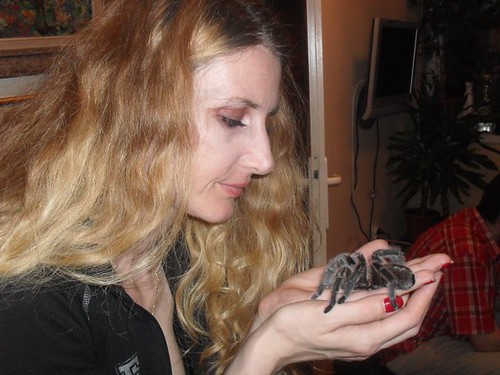Any student of the psychotherapies would have heard the terms:
Eros and thanatos
Libido and mortido
Life instinct and the death instinct
If not, then they should have! Freud seized on this concept and it became central in his overall theory of human nature. In his book “The ego and the id” he discussed this theory of instincts at length.
Freud[1962] in his discussion of the two classes of instincts states that the first class is the sexual instincts or Eros. This is a "...self-preservative instinct,..."(P30). On the other hand there is the death instinct whose task it is to, "...lead organic life back into the inanimate state;..."(P30).
He is thus entering into the field of the philosophy of opposites. Human nature, life and the universe is unerringly a collection of opposites. The answer to the question, “Is it possible to have something that does not have an opposite?” begs unending cognition.
Hyams(1998) notes this in her article on dissociation. She says that the world is full of polarities - good/bad, inhaling/exhaling, high/low and so on. In addition there is yin/yang, protons/electrons, left/right, black/white, matter/anti-matter and so on endlessly. Does something exist that does not have an opposite? I am yet to think of one. As soon as one defines ‘x’, then ‘not x’ is also defined. However that is for the philosophers to conjugate over.

THEORY OF OPPOSITES
Freud’s theory of these two instincts is a theory of opposites. One problem with such theories is they can become static. One discusses what is a manifestation of Eros (the life instinct) and what is a manifestation of Thanatos (the death instinct).
Eros = love, procreation, win/win situations, peace and cooperation, god.
Thanatos = hate, murder, game playing, war, devil.
This provides us with a static taxonomy of this theory. It is possible to look at how they interact and Freud does this to a certain extent in ‘The ego and the id’. He talks about love and hate being able to change into one another and how eating is both simutaneously constructive (gives life to consumer) and destructive (destroys the consumed product).
It is this point, in my view, that gets lost and is never taken far enough by Freud. This theory of insticts gets caught up in a right/wrong or good/bad morality. His bipartite system has a moral basis which leads it into trouble. It follows on from the same moral view that has been held by many if not all religions throughout time.
Life, growth, creation is good vs death and destruction is bad. In religious terms we have good and evil and god and the devil. The church has for all time seen god as good and the devil as bad and we must behave and think in a way that allows to be with god and defeat the devil. The only true way to defeat the devil is to not define god. As soon as one defines god, one defines the devil at least in part - the devil = non-god. If you do not define god then the devil cannot exist. If it does not exist then it is ‘beaten’ in one sense.

MORAL BASIS OF PSYCHOTHERAPY
This god vs devil or eros vs thanatos are static models based on a moral principle as suggested before. Thus we have the very basis for the moral underpinnings of psychotherapy.
Thanatos vs Eros = games vs intimacy, aggression vs assertion, I’m not OK vs I’m OK, win/lose vs win/win, competition vs cooperation, script vs autonomy. Some now argue they do not hold to such a moral view, as Transactional Analysts they work with the client and hold no judgements as to what is right and wrong.
In my view - balderdash. How many books on TA describe how to increase game behaviour and decrease the capacity for intimacy. How many describe how to avoid intimacy and increase script bound thinking and feeling. Transactional analysis is based on (as are all psychotherapies) a set of moral judgements about what constitutes life & growth and what constitutes death and destruction. What constitutes health and what constitutes pathology is central to any psychotherapy.

EROS & THANATOS VIEWED DYNAMICALLY
Let us take the static model of Freud’s bipartite theory and look at it as a dynamic model. Once done we end up with a very different situation. This allows us to go beyond examining the two insticts and what they represent in thinking, feeling and behaving. Instead it leads us to 3 new questions:
1. Are Eros and Thanatos interacting or not?
2 When they do not interact what happens?
3 When they do intereact what happens?
These three questions lead us to yet another set of opposites - change vs inertia.
What would happen if all the poeple on earth suddenly came to their senses and were able to tap totally into their eros energy and avoid all their thanatos energy? Governments would stop spending trillons of dollars on building bombs and weaponery and put all that money into psychotherapy and medical science. With all the advances taking place eventually people would than be able to live good quality lives until, they were 150 years old. What would the planet be like then. Firstly, governments of the world would rapidly bring out one child policies and these would even more rapidly become ‘no child policies’ or ‘very few child policies’. We end up in a state of inertia - little change. If we could all tap into the good growth, creative energy of the universe we end up static, in a state of inertia. When the eros instinct over rides its opposite for too long this is where we end up. If the thanatos instinct over rides then we end up in a similar state. Everything is destroyed, nothing is created and we end up inert again.
As transactional analysts this means we must be aware that it is essential that we remain playing games at some level and remain script bound to some degree. If we became script free then we end up inert. Thus we have one answer to the question about what happens when eros and thanatos do not interact.
So what happens when they do interact. Consider this other example that occured in Australia recently. There were massive bush fires in the eastern states of Australia. We saw images of huge flames, dead animals and huge areas of burnt out forests, All the reports were of how much devastation had been caused, how much bush had been destroyed. Clearly thanatos had been at work and left massive destruction in its wake.
However this is incorrect. The bush had not been destroyed it had been changed. The pictures of huge blackened areas all left us with black, sorrowful feelings. These blackened areas should be a stimulus of great feelings of excitment, anticipation and joy, not of sorrow. Imagine the growth and creation of insects, rodents, vegetation that are now going to occur in these blackened areas. It will represent an expression of eros in its undiluted form, a thing which we all say is wonderful. If there had never been the thanatos of the fire then this eros could not have occured.

DEATH PHOBIA
We humans are a death phobic species. We will do almost anything to avoid the pain that acts based on the thanatos instinct can bring. We spend millions of dollars on fire fighters and fire fighting equipment to reduce the “destruction” (ie thanatos, ie change) to a minimum.
Consider human reaction to endangered species like the elephant or lion - the Kings of the wild. What do we do. We create breeding in captivity programs in zoos. We create reserves for them to live in. These are called wild life parks. A nice term to alleviate our guilt. Lets be realistic wild life parks are the same as breeding in captivity. These wildlife parks and zoos are simply museums. They allow us and our children to see species as how they once were. A useful endeavour. But lets not pretend they are existing as they used to. Such parks and zoos allow us to observe the history of such species, not the now.
So why do not we just let all the elephants and lions die out. Let that symbol of evil and thanatos - the poacher - do his work and kill off all the remaining ones. Why do we not get it over and done with instead of stringing out the pain and trying to pretend that these species still exist. Why do not we accept that lions are extinct, its just that we do have some in a museum that we can go and look at from time to time?.
I do not have an answer. Perhaps it is a sign of some form of collective human guilt. Perhaps it is because we have accepted a static model of eros and thanatos or god and the devil. If we look at the same model dynamically then we see that with the extinction of the lion that opens up change and some form of species will be allowed to grow, develop or even be created that could never have happened with the presence of the lions. The poachers work allows eros (god) and thanatos (devil) to interact thus we do not remain in inertia but move into a change phase.

PSYCHOTHERAPY AND THE DYNAMIC MODEL
How does this translate into psychotherapy and transactional analysis. All psychotherapies have some sort of statement on what is health and what is not. The majority spend a great deal of time defining such things. For instance in TA we have script and autonomy. Large amounts of time and energy have been spent on defining and diagnosing what are script thoughts, feelings and behaviours and what are not. Then just as much time is spent on how to treat or facilitate change of such thoughts and feelings.
How would people react to suggestions that:
“A divorce is to be as celebrated as much as a marriage”
“Game playing is essential to normal human growth and development”
“The srcipt free individual will wither and die over time”
This is what the dynamic model of eros and thanatos or the life and death instincts proposes. Up to date psychotherapies have been taken from the church or the (moral) static dichotomy of good and bad and the god and the devil.

CONCLUSION
It seems erronous to view humans as having the two drives of eros and thanatos. Instead we have:
interaction/unbalance/change or stagnation/balance/homeostasis.
It is more reasoned to view these two drives as either interacting or not. If they are not dynamically involved then we have stagnation and non-life. If they are interacting then we have life.
REFERENCES
Freud, S. (1962). The ego and the id. New York: W.W. Norton.
Hyams, H. (1998) Dissociation: Definition, Diagnosis, Manifestations, and Therapy, with Special Reference to Cults/Sects. Transactional Analysis Journal. 28(3), 234 - 243.
No comments:
Post a Comment